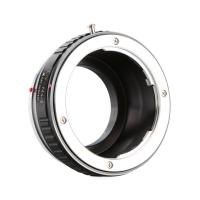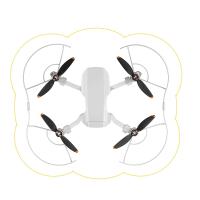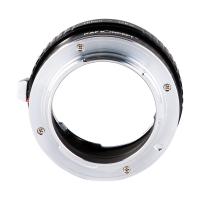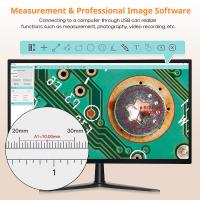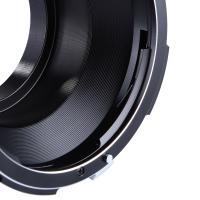What Can You See With Light Microscope ?
With a light microscope, you can see a wide range of specimens, including cells, tissues, and microorganisms. The microscope uses visible light to magnify the image of the specimen, allowing you to observe its structure and morphology. You can see the details of cells, such as the nucleus, cytoplasm, and cell membrane. You can also observe the different types of tissues, such as muscle, nerve, and connective tissue. Additionally, you can see microorganisms, such as bacteria, fungi, and protozoa. With staining techniques, you can enhance the contrast of the specimen, making it easier to see specific structures or features. Overall, the light microscope is a powerful tool for studying the microscopic world and has contributed greatly to our understanding of biology and medicine.
1、 Cell structure and organelles
With a light microscope, one can see the basic cell structure and organelles of a variety of organisms. These include the cell membrane, cytoplasm, nucleus, mitochondria, endoplasmic reticulum, Golgi apparatus, lysosomes, and ribosomes. The cell membrane is the outermost layer of the cell that separates the cell from its environment. The cytoplasm is the fluid inside the cell that contains all the organelles. The nucleus is the control center of the cell that contains the genetic material. Mitochondria are the powerhouses of the cell that produce energy. The endoplasmic reticulum is a network of membranes that transport proteins and lipids. The Golgi apparatus is responsible for modifying, sorting, and packaging proteins. Lysosomes are organelles that break down waste materials. Ribosomes are responsible for protein synthesis.
Recent advancements in light microscopy have allowed for higher resolution and better visualization of cellular structures. For example, super-resolution microscopy techniques such as stimulated emission depletion (STED) microscopy and structured illumination microscopy (SIM) have allowed for the visualization of structures as small as 20 nanometers. Additionally, live-cell imaging techniques have allowed for the observation of dynamic cellular processes in real-time. Overall, the light microscope remains an essential tool for studying cell biology and continues to provide valuable insights into the structure and function of cells and their organelles.

2、 Tissue organization and morphology
With a light microscope, it is possible to observe tissue organization and morphology. Tissue organization refers to the arrangement of cells and extracellular matrix in a tissue, while morphology refers to the shape and structure of cells and tissues. Light microscopy allows for the visualization of cells and tissues at a resolution of up to 0.2 micrometers, which is sufficient to observe many cellular structures and processes.
Using light microscopy, it is possible to observe the different types of cells that make up a tissue, as well as their arrangement and interactions with each other. For example, in epithelial tissues, it is possible to observe the different layers of cells and their specialized functions, such as absorption or secretion. In connective tissues, it is possible to observe the different types of cells, such as fibroblasts and macrophages, as well as the extracellular matrix that provides support and structure to the tissue.
Recent advances in light microscopy have allowed for even greater resolution and visualization of cellular structures. For example, confocal microscopy allows for the visualization of three-dimensional structures within a tissue, while super-resolution microscopy allows for the visualization of structures at a resolution beyond the diffraction limit of light. These techniques have enabled researchers to observe cellular processes such as protein localization and trafficking, as well as the interactions between cells and their environment.
In summary, light microscopy is a powerful tool for observing tissue organization and morphology, and recent advances in microscopy techniques have allowed for even greater resolution and visualization of cellular structures and processes.

3、 Microbial morphology and motility
With a light microscope, it is possible to observe the morphology and motility of microorganisms. Microbial morphology refers to the physical characteristics of microorganisms, such as their shape, size, and arrangement. By using a light microscope, scientists can observe the shape and size of bacteria, fungi, and other microorganisms. They can also observe the arrangement of cells, such as whether they are in chains, clusters, or pairs.
In addition to morphology, a light microscope can also be used to observe microbial motility. Microbial motility refers to the ability of microorganisms to move. Some microorganisms are motile, meaning they can move on their own, while others are non-motile. By using a light microscope, scientists can observe the movement of microorganisms, such as the way bacteria move by using flagella or the way amoebas move by using pseudopodia.
The latest point of view in microbiology is that the use of light microscopy has become more advanced and sophisticated. With the development of new techniques and technologies, scientists can now observe microbial morphology and motility in greater detail and with higher resolution. For example, confocal microscopy and super-resolution microscopy have allowed scientists to observe microorganisms at the subcellular level, providing new insights into microbial structure and function. Additionally, the use of fluorescent dyes and probes has allowed scientists to visualize specific structures and molecules within microorganisms, such as the location of specific proteins or the presence of certain metabolic pathways. Overall, the use of light microscopy continues to be an important tool in microbiology, providing valuable insights into the structure and function of microorganisms.

4、 Blood cell types and abnormalities
With a light microscope, it is possible to see various types of blood cells and their abnormalities. The three main types of blood cells that can be observed are red blood cells, white blood cells, and platelets. Red blood cells are responsible for carrying oxygen throughout the body, and they appear as small, biconcave discs. White blood cells, on the other hand, are part of the immune system and can be further classified into different types, such as lymphocytes and neutrophils. Platelets are responsible for blood clotting and appear as small, irregularly shaped fragments.
In addition to observing the different types of blood cells, a light microscope can also be used to detect abnormalities in these cells. For example, sickle cell anemia is a genetic disorder that affects the shape of red blood cells, causing them to become crescent-shaped. Other abnormalities that can be observed include the presence of abnormal white blood cells, such as in leukemia, and abnormal platelets, such as in thrombocytopenia.
It is worth noting that while a light microscope is a powerful tool for observing blood cells, it does have its limitations. For example, it may not be able to detect certain types of abnormalities, such as genetic mutations that do not affect the physical appearance of the cells. Additionally, other imaging techniques, such as electron microscopy, may be necessary to observe certain structures within the cells. Nonetheless, the light microscope remains an essential tool for studying blood cells and their abnormalities.











